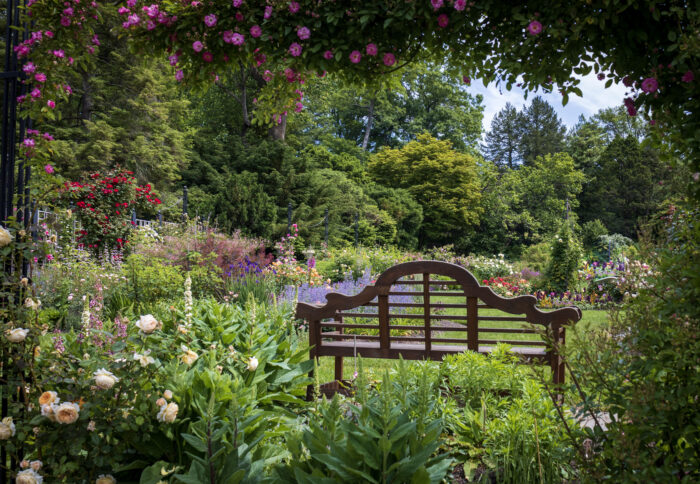How are you staying grounded these days? I use the term advisedly, since for many of us, our overly-digitized lives can lead to living in our heads, bombarded by alarming headlines on our smartphones. Judaism has long known that connecting to what’s under our feet can help to calm what’s in our heads.
I’m a rabbi who finds inspiration and solace in nature as well as ancient texts. In the course of several posts here on The Wisdom Daily, I will share insights and practices that have helped me and may be useful to you, based around the four ancient elements of earth, water, air, and fire / light. Each and all of these can be ready gateways to foster connection with nature, tradition, and our inner lives. Today, we will start by exploring Earth.
Human as Earth Creature
According to the first chapters of Genesis, the first human, “The Adam,” was formed from the ground, the Adamah (Genesis 2:7). Midrashic sources describe the first human as containing both male and female within them (Genesis Rabbah 8:1), to be separated into genders with the creation of Eve (in Hebrew, “Chava,” mother of all life). Another beautiful Midrash is that this first human was made with soil from all over the world, in a variety of colors, so that they would be at home anywhere on earth, and poignantly, so that the earth anywhere on the planet would be willing to receive their remains (Rashi, Tanhuma Pikudei, 3). As soon as the Adam is made from the Adamah, they are put to work tending the garden; in other words, gardening was the first profession. The Garden of Eden is the image of a primal home, both verdant and beautiful, that I see as a symbol of Planet Earth itself.
Genesis is only the beginning of the Torah connecting humans and the ground beneath our feet. At one of the most famous theophanies in the Torah, when Moses stood at the burning bush, God told him to remove his shoes, because he was standing on holy ground (Exodus 3:5). At this moment of sacred revelation, going barefoot was mandated, as it was for the Kohanim in the ancient temple service. Hassidic teachings read the text creatively: removing one’s shoes was both symbolically and linguistically connected to removing narrow and habitual ways of thinking and seeing the world.
Reconnecting with the Earth
Both these and other biblical scenes point to the spiritual power of reconnecting with the earth. Contemporary science hints that it may also be healthy. “Earthing” includes modalities of going barefoot, lying on the ground, or other techniques to get the body into direct contact with the negative electrical charge of the earth, a practice purported to convey benefits to health or mood. With the current level of research, it can be hard to sort out the measurable benefits of earthing from the placebo effect and the known positive aspects of being outdoors in the sunshine and fresh air. Whatever the scientific basis, being outside and connected with the earth is something that many people find comforting or emotionally supportive.
Similarly, science is showing the positive aspects of Adam and Eve’s first job: gardening. Not only does tending a garden offer healthy outdoor exercise and an improved diet, but the dirt itself may contain healthy bacteria that enhance mental and physical well-being.
I know many people who find their greatest comfort and grounding as they get their hands dirty working in the garden, their own little Eden, or in a community or synagogue garden (some of which grow food to feed those in need). But even if you lack a green thumb or garden patch, you can seek out ways to make life more of a garden by growing houseplants, putting a plant on your desk at work, buying from a farmer’s market or farm stand, making a Shabbat centerpiece of flowers and herbs, or just strolling through a public garden as your senses absorb the sights and sensations.
Feet on the Earth Practice
Here’s a practice that you can try for getting more grounded: Taking off your shoes like Moses can be a great way to make a fast connection with the strengthening power of the earth. (If the situation isn’t conducive to going barefoot, you can do this with shoes on, but do try it barefoot sometime.)
Standing or seated, plant your feet firmly on the ground. Take some time to feel the textures and temperatures on your feet and sense your connection with the earth.
Let your posture be straight but not stiff, like a tree or Jacob’s ladder, linking heaven and earth.
You can imagine your feet like plants or tree roots, rooted into the soil. Sense the earth’s energy flowing from two directions, upward and downward, earth and sky each offering its nourishment in turn as you breathe. Or, as you breathe in and out, picture the exchange of your breath with the trees and plants in your environment.
Imagine the power of the earth from its molten core through its bedrock and topsoil, supporting and strengthening you right here and now. Imagine the layers of the past under your feet, giving you guidance.
Let your senses absorb the sights, sounds, scents, and sensations of your Makom, the place upon which you are situated.
If you like, you can repeat this phrase in Hebrew to yourself:
Use this exercise—in a quick or extended form—whenever you need to feel more grounded.
Blessings! Let me know how it goes.
*Photo taken by Rabbi Julie Hilton Danan, https://wellspringsofwisdom.com

